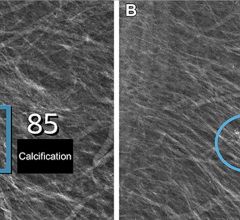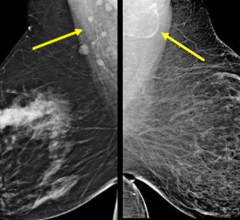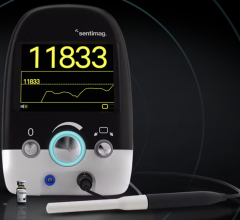
May 6, 2009 - A newly discovered gene known as DEAR1 is mutated in breast cancer and is an independent predictor of local recurrence-free survival in early-onset breast cancer, a research team headed by scientists at The University of Texas M. D. Anderson Cancer Center reports in the journal PLoS Medicine.
"The correlation with local recurrence is significant because so many young women have recurrences in the breast, and cancers that do recur tend to be more aggressive," said senior author Ann McNeill Killary, Ph.D., professor in M. D. Anderson's Department of Genetics. "Young age has been considered a risk factor for local recurrence and metastasis. It is important to understand the genetic mechanisms operating in early-onset breast cancer and to determine whether there is a way to identify young women who might be at a higher risk of recurrence."
After Killary's laboratory research discovered DEAR1 (ductal epithelium-associated ring chromosome 1) and implicated it in breast cancer, the team examined a tumor tissue microarray from 123 women whose breast cancer began between ages 25 and 49, all of whom advanced to invasive disease. Of these, 56 percent lacked DEAR1 expression in their tumors, which was associated with 58 percent local recurrence-free survival 15 years after surgery. For those with DEAR1 expression, local recurrence-free survival was 95 percent at 15 years.
"Immunohistochemical staining for DEAR1 could potentially be performed in any hospital setting, and such an assay might predict which women are at a high risk of recurrence and potentially help guide treatment decisions" Killary said, noting the results will need to be validated in a larger cohort of patients.
Breast cancer that develops before age 50 tends to be more aggressive and more likely to recur even in the absence of invasion of the lymph nodes at diagnosis. "Approximately one-fourth of women without nodal involvement will experience a recurrence up to 12 years after surgery," Killary said. Of the 123 early-onset patients, 72 percent had no lymph node involvement at diagnosis.
Low expression associated with triple-negative breast cancer
While the researchers found that loss of DEAR1 expression correlated significantly with local recurrence, it did not correlate with overall survival in this young cohort.
However, lack of DEAR1 expression was associated with triple-negative breast cancer, which indicates poor prognosis because it lacks estrogen or progesterone receptors and does not express HER2, three targets for therapy. Lack of DEAR1 expression also was associated with a strong family history of breast cancer.
The team discovered the gene in a region of the human genome that has been implicated in other epithelial tumors, including colon and pancreatic cancers, and that the researchers suspected might harbor an important tumor suppressor gene. Finding that DEAR1 was mutated in breast cancer suggested that it could play a role in the initiation and progression of the disease.
The researchers found evidence that DEAR1 plays a critical regulatory role in acinar morphogenesis, or the orderly development and differentiation of the terminal ductal lobular units (TDLU) in the breast. TDLUs are structures present at the ends of a branching network of ducts in the normal mammary gland which also are thought to be the site of origin of many breast cancers. Mutations in DEAR1 lead to cellular disorganization, lack of cell differentiation, and loss of normal structure in breast tissue - all hallmarks of a transition to malignancy.
Mutated or deleted DEAR1 causes structural dysfunction
The researchers tested their theories in an experimental model using three-dimensional basement membrane culture systems designed to reproduce the tissue architecture of the mammary gland.
The first experiment tested whether placing a normal DEAR1 gene into a cancer cell could re-establish a more normally functioning cell. Killary noted that when tumor cell lines containing a DEAR1 mutation were grown in the culture system, the cells showed aberrant growth and formed large clumps of cells with no organized structure. Inserting a normal DEAR1 gene restored acinar morphogenesis and resulted in structures that were very similar to those present in normal breast tissue.
In a second tissue culture experiment, the researchers shut down expression of the DEAR1 gene in normal breast epithelial cells, which caused the cells to lose their ability to form proper structures.
In addition, the researchers used immunohistochemical staining to examine DEAR1 expression in 14 samples of ductal carcinoma in situ (precancerous abnormalities) with adjacent normal epithelium and in the corresponding invasive cancer from the same patient. They found that DEAR1 was expressed in all the normal ducts in the glands but was lost or downregulated in the transition from normal epithelium to DCIS in 10 of the 14 patient samples.
This research was funded by the Texas Advanced Research Program, The U. S. Department of Defense, the National Cancer Institute Early Detection Research Network, National Cancer Institute training grant, the National Kidney Foundation, and by the Ladies Auxiliary to the Veterans of Foreign Wars.
Source: University of Texas M. D. Anderson Cancer Center
For more information: www.mdanderson.org


 July 29, 2024
July 29, 2024 








